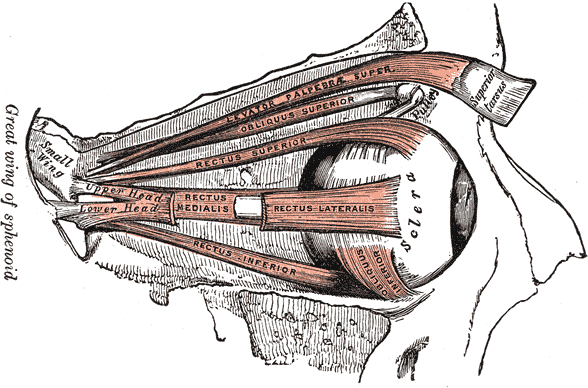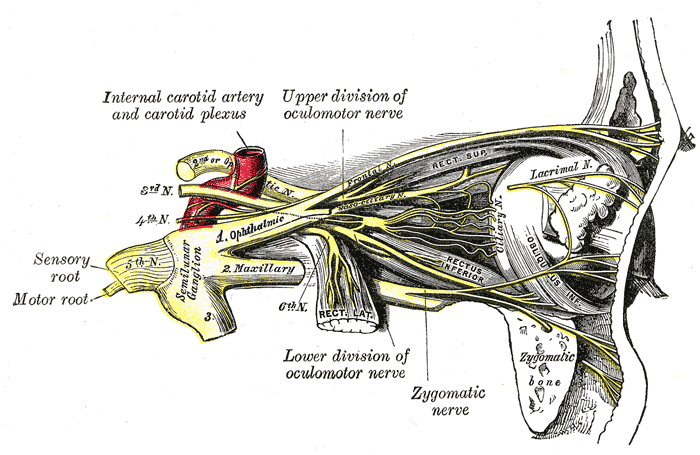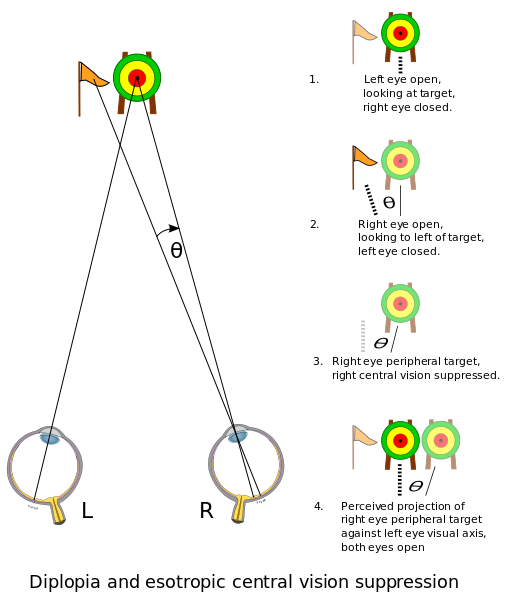Ocular Motility Conditions
Conditions related to eye alignment and movement.
This page provides an overview of some of the more common ocular motility conditions – conditions related to eye alignment and movement, such as squint. Typically patients with such disorders report double vision (diplopia), involuntary movement of the eyes (nystagmus), cosmetic issues or simply poor vision.
Anatomy of the Eye Muscles

There are six muscles to control the movement of each eyeball. These eye muscles are some of the fastest contracting and most precisely controlled skeletal muscles in the human body. The muscles connect the eye socket to the surface of the eyeball. The muscles work in pairs contracting and pulling to move the eyeball up and down and side to side – some of these muscles also slightly rotate the pupil.
Neuroanatomy
There are very close ties between ocular-motility and neuro-ophthalmology which deals with disorders affecting the nerve pathways that connect the eyes to the brain. Neuro-ophthalmologic disorders may also involve dysfunction of the central pathways that control and integrate eye movement and vision.
The brain controls both voluntary and involuntary eye movements via three nerves which carry signals from the brain to the muscles. These are: (i) the oculomotor nerve, which controls the majority of the muscles, (ii) the trochlear nerve, which controls the superior oblique muscle, and (iii) the abducens nerve, which controls the lateral rectus muscle. Dysfunction of these three nerves may affect the eye, pupil, optic nerve, or the extraocular muscles and their nerves.

STRABISMUS OR SQUINT
Squint, also referred to as Strabismus is a condition in which the eyes point in different directions – they are not properly aligned with each other. When the two eyes do not work together, depth perception may be adversely affected and it may also limit the field of vision. A squint is frequently a result of poor coordination between the muscles controlling the eyes, either due to a disorder of the muscle(s) or sometimes a problem of the brain controlling the eyes.
Squints may be intermittent or constant and can manifest at any age. It is estimated that between 3 and 5% of the Australian population are affected by squints. With children it is important to get a squint treated as soon as possible as it will affect development of vision permanently. For adults, apart from the cosmetic problem, a squint may cause double vision because the eyes are not focusing on the same image which confuses the brain.
Generally speaking, squint treatment requires specialised eye muscle surgery, though there are cases where medication, vision therapy or vision aids such as glasses, prisms may be employed. Please consult a specialised ophthalmologist for further details.
Paediatric Squints
The most common form of childhood strabismus is “crossed eye” or esotropia. This is when the eyes cross, or deviate inwards. Less commonly, the eyes can deviate outward (exotropia) or vertically (hypertropia). The causes of squints are variable and require a detailed eye examination to determine the underlying cause.
Childhood strabismus can result in disruption of development of normal vision, this may include stereopsis, depth perception and visual acuity – lazy eye. The aim of treatment for childhood squint is to preserve or restore vision and the cosmetic realignment of the eyes. This may involve use of glasses, patching, eye drops, eye exercises or surgery. Due to the disruption of normal visual development and potential malignant causes of strabismus, assessment and treatment from ophthalmologist should be sought as soon as possible.
Adult Squints
Squint in adulthood is usually a result of poorly managed, or indeed untreated, squint from childhood. Though it is estimated that approximately 4% of adults suffer from misaligned eyes due to injury or disease. A squint manifesting in adulthood often results in double-vision because the eyes are not focusing on the same image which confuses the brain. This may be improved by prisms or surgery.
From a social perspective, there are many cases where a squint leads to reduced self-confidence and low self-esteem. Such cases are candidates for modern surgical treatment. Although surgery in most cases will not restore binocular function, it may correct the squint such that the person has a normal appearance. Many patients report improved self-confidence and self-esteem after surgery.
NYSTAGMUS
Nystagmus is a condition of involuntary eye movement that may result in reduced or limited vision. It may be congenital, or it may be acquired. The condition is characterised by an involuntary oscillatory movement of the eyes. These movements may be jerky or pendular and this movement may vary when one looking in another direction.

Student BSMU at the English language Wikipedia [GFDL, CC-BY-SA-3.0 or GFDL], via Wikimedia Commonsg
To maintain distant visual images, whenever the head rotates, the brain compensates by rotating the eyes in the opposite direction. The inner ear detects angular acceleration and send signals to the brain. The brain then relays the signal to the extraocular muscles to fix the eyes on one object as the head moves.
Nystagmus occurs when the semicircular canals in the inner ear are stimulated while the head is not in motion.
A type of nystagmus occurs normally and can be observed when someone on a moving train watches a stationary object out of the windows: the eyes slowly follow the as object until it disappears from view and then the eyes quickly jerk back to the other side of the window.
Nystagmus can be sensory and develop as a result of poor vision, or it can be motor and develop as a result of a neurological problem.
DIPLOPIA (or DOUBLE-VISION)
Double vision (also known as diplopia) is when a person sees two images of a single object simultaneously.
The two images may be displaced horizontally, vertically, both horizontally and vertically and even rotationally.
Double vision may be constant, intermittent or it may even occur when looking only in a certain direction.
Double vision is typically the result of the eye muscles not working properly; damage to the eye muscles or nerves prevents both eyes focussing simulteously on the target.
Both eyes may be perfectly functional but since they cannot converge on the target simultaneously, each eye creates its own slightly different image as each they are not focussed on the same target.
This causes the perception of two images instead of one as the brain is unable to fuse them into a single image.
Some cases of double vision only affect a single eye – usually occurs through light splitting when entering the eye, caused by a cataract, faulty spectacles, unevenness of the surface of the eye. Alternatively, it could also be a problem with the back of the eye.
Please note that double vision can be part of a more generalised problem so it is very important that the correct cause is correctly identified.

By Dom1953 (Own work) [CC BY-SA 3.0], via Wikimedia Commons
